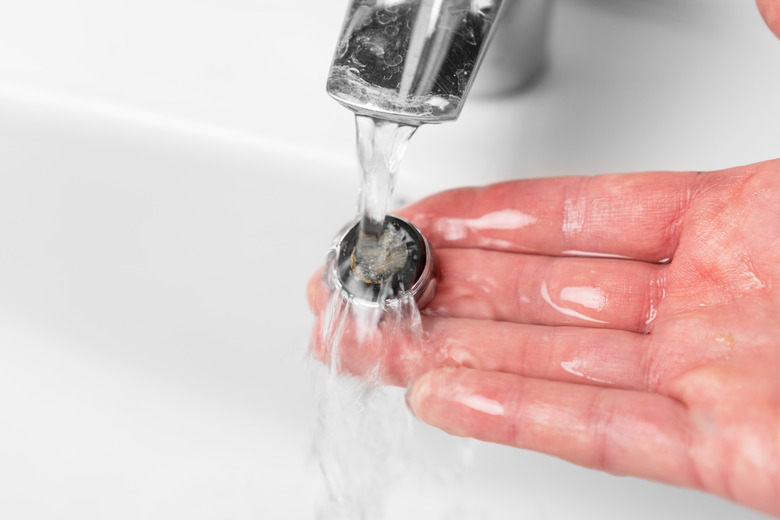How To Fix A Whistling Kitchen Faucet
When a faucet makes high-pitched noises, such as a squealing or whistling sound, something in the path of the water flow must be vibrating, because water is pretty much incapable of whistling on its own. The most likely culprits are loose or worn rubber parts inside the aerator or in the faucet itself. Another, more troubling, possibility is that the water pressure is so high that the flow is causing something to vibrate that isn't worn, and that calls for immediate action.
Is the Faucet Aerator Whistling?
Is the Faucet Aerator Whistling?
The aerator is the screen fitting screwed onto the tip of the spout. It's there to restrict water flow, but when the internal screen gets gummed up with calcium deposits, it does its job too well, and the water pressure can make the internal washer vibrate. You could replace the washer, but you probably won't need to. Instead, you can clean the screen by soaking the aerator — minus the washer — overnight in vinegar.
If you can grasp the aerator with your fingers, you may be able to unscrew it by hand. But if not, use adjustable pliers. Some aerators are recessed inside the spout, and these "cache" aerators usually require a special tool for removal. Before you go to the hardware store to buy one, put on a rubber glove and try unscrewing the aerator by pushing your finger inside and turning counterclockwise. You might also have luck by wedging the jaws of a pair of needle-nose pliers inside and turning it with the pliers.
The Whistling Could Be Coming from the Valves
The Whistling Could Be Coming from the Valves
If you can rule out the aerator as a cause of the whistling, disassemble the faucet and look for loose or worn rubber components. If the faucet has two handles, and you only hear the hot or cold tap squealing, that's where to focus your efforts. A single-handle faucet may stop whistling when you push the handle all the way to the right or the left, which is a clue that either the cold or hot valve is responsible, but not both.
Turn off the water before disassembling the faucet, then remove the handle and use a wrench or locking pliers to unscrew the valve retaining nut. When you do this, you may find that the nut is loose, and all you have to do is tighten it to stop the noise. If not, it's time to start inspecting rubber.
The parts most likely responsible are the rubber gaskets in the water inlet holes in the valve housing. You'll find these on single-handle cartridge and ball-valve faucets, and you can remove and replace them with a screwdriver after removing the valve. These gaskets often have springs, which should also be replaced, as well as any O-rings and other rubber parts you find. If the valve is full of mineral deposits, soak it overnight in vinegar.
Read more: How to Troubleshoot and Repair a Faucet
Your Water Pressure May Be Too High
Your Water Pressure May Be Too High
You may notice whistling at more than one faucet, which usually indicates that the water pressure is too high. You can test the pressure by screwing an inexpensive pressure gauge onto one of your outdoor spigots. If you have a well, then check the gauge on the pressure pump.
Ideally, the pressure should be between 50 and 60 psi. If it's much higher than that, you need to reduce it, either by adjusting the pressure regulator or turning down the cut-off pressure on the pressure pump. If you can't figure out how to do this yourself, call a plumber as soon as you can, before the high pressure ruptures a pipe or bursts a fitting.
